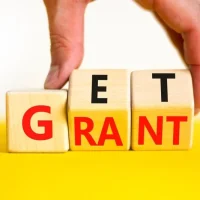In the ever-evolving landscape of nonprofit organizations, the significance of automation in fundraising cannot be overstated. As NGOs strive to maximize their impact while managing limited resources, automation emerges as a powerful ally. By streamlining repetitive tasks, organizations can free up valuable time and energy, allowing staff to focus on strategic initiatives and relationship-building with donors.
Automation not only enhances efficiency but also improves accuracy, reducing the likelihood of human error in critical processes such as donor management and reporting. Moreover, automation facilitates a more personalized approach to donor engagement. With the ability to segment audiences and tailor communications based on individual preferences and behaviors, NGOs can create meaningful connections with their supporters.
This level of personalization fosters loyalty and encourages recurring donations, ultimately leading to a more sustainable funding model. In a world where donors are inundated with requests for support, leveraging automation can help organizations stand out by delivering timely and relevant messages that resonate with their audience.
Identifying Key Areas for Automation in Fundraising
To effectively harness the power of automation, NGOs must first identify the key areas within their fundraising efforts that can benefit from this technology. One of the most impactful areas is donor management. Automating the process of tracking donor information, contributions, and engagement history allows organizations to maintain accurate records without the burden of manual data entry.
This not only saves time but also ensures that staff have access to up-to-date information when reaching out to donors. Another critical area for automation is communication. Automated email campaigns can be set up to nurture relationships with donors through regular updates, thank-you messages, and appeals for support.
By utilizing customer relationship management (CRM) systems, NGOs can segment their donor lists based on various criteria, such as donation history or engagement level, enabling them to send targeted messages that are more likely to resonate with each recipient. Additionally, automating social media posts and fundraising event reminders can help maintain a consistent online presence without overwhelming staff.
Choosing the Right Tools and Technologies for Automation
Selecting the appropriate tools and technologies for automation is crucial for maximizing fundraising efficiency. There are numerous platforms available that cater specifically to the needs of nonprofits, offering features such as donor management, campaign tracking, and reporting capabilities. When evaluating these tools, organizations should consider factors such as ease of use, integration with existing systems, and scalability to accommodate future growth.
Popular options include CRM systems like Salesforce for Nonprofits or Bloomerang, which provide comprehensive donor management solutions. Additionally, email marketing platforms like Mailchimp or Constant Contact can facilitate automated communication campaigns. It’s essential to choose tools that not only meet current needs but also have the potential to grow alongside the organization.
Investing in technology that offers robust analytics and reporting features will enable NGOs to track their fundraising performance effectively and make data-driven decisions.
Setting Up Automated Campaigns and Workflows
Once the right tools have been selected, NGOs can begin setting up automated campaigns and workflows tailored to their specific fundraising goals. The first step is to define clear objectives for each campaign, whether it’s increasing donor retention, promoting a specific event, or launching a new initiative. By establishing measurable goals, organizations can create targeted workflows that guide potential donors through the engagement process.
For instance, an automated welcome series for new donors can be designed to introduce them to the organization’s mission and impact while encouraging them to become more involved. This series might include a thank-you email immediately after their first donation, followed by a series of messages highlighting success stories and upcoming events. Additionally, setting up reminders for staff to follow up with major donors or lapsed supporters can ensure that no opportunity for engagement is missed.
By automating these processes, NGOs can maintain consistent communication without overwhelming their teams.
Monitoring and Analyzing Automated Fundraising Efforts
Monitoring and analyzing automated fundraising efforts is essential for understanding their effectiveness and making informed adjustments. Most automation tools come equipped with analytics features that allow organizations to track key performance indicators (KPIs) such as open rates, click-through rates, and conversion rates. By regularly reviewing these metrics, NGOs can gain insights into what resonates with their audience and identify areas for improvement.
For example, if an email campaign has a low open rate, it may indicate that the subject line needs to be more engaging or that the timing of the email was not optimal. Conversely, high click-through rates may suggest that the content is compelling but could benefit from clearer calls to action. By analyzing these data points, organizations can refine their messaging and strategies over time, ensuring that their automated efforts are continually aligned with donor preferences and behaviors.
Optimizing and Adjusting Automated Processes for Continuous Improvement
Continuous Improvement through A/B Testing
Engaging in A/B testing can be particularly beneficial in this regard. By experimenting with different subject lines, content formats, or sending times, NGOs can gather valuable data on donor preferences and behaviors. This iterative process not only enhances the effectiveness of automated campaigns but also fosters a culture of continuous improvement within the organization.
Donor Feedback and Insights
Furthermore, soliciting feedback from donors about their experiences can provide insights that inform future strategies. This feedback can help NGOs refine their automated campaigns and improve overall donor engagement.
Mastering Automation for Greater Impact
In conclusion, mastering automation in fundraising is a multifaceted endeavor that requires careful planning, execution, and ongoing evaluation. By understanding its importance, identifying key areas for implementation, choosing the right tools, setting up effective campaigns, monitoring performance, and continuously optimizing processes, NGOs can significantly enhance their fundraising efforts. Embracing automation not only streamlines operations but also empowers organizations to build stronger relationships with their supporters—ultimately leading to greater impact in their communities.








































